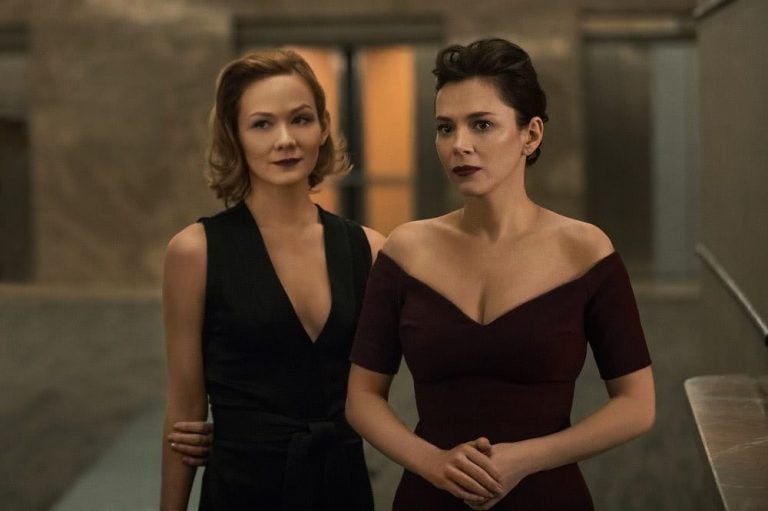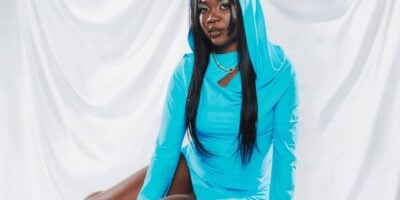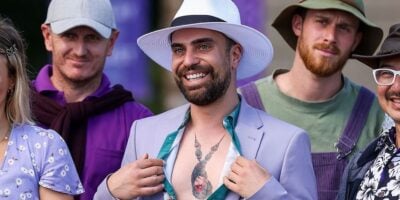After pushing boundaries with its first season, The Girlfriend Experience has returned for an excellent second outing. Instead of following the exploits of season one’s law-student-turned-sex-worker Christine (Riley Keough), the show unravels twinned narrative threads.
Showrunners, writers, and directors Amy Seimetz and Lodge Kerrigan take a story each, with one episode from both creators dropping every Sunday on Stan. While Seimetz’s story follows former sex worker Bria (Carmen Ejogo), who has escaped an abusive relationship and entered into the witness protection program, Kerrigan delves deep into the cold corruption of Washington, D.C., where lobbyist Erica (Anna Friel) falls into a complicated relationship with sex worker Anna (Louisa Krause).
Kerrigan’s season two episodes resemble the first season more closely than Seimetz’s, but they nonetheless delve into a territory that the first season didn’t, investigating the emotional fallout that occurs when a transactional relationship develops into something distinctly more messy. Kerrigan explained his writing process, his background, and his creative aims over the phone: the following is the transcript of the interview, which has been edited and condensed for clarity.
After you and Amy Seimetz were thrown together as co-creators for season one, what was it about the prospect of a season two that made you want to do this different format and work quite independently?
Our backgrounds are as filmmakers and as writer-directors, so I think as directors we tend towards working individually. But also Amy and I wanted to push the idea of the traditional format of television; to show many variations of the format that could potentially work. I love the potential it allows – you could watch either Amy’s episodes or mine, and then the audience can draw their own connections between the two as they watch those storylines.
I think there’s some thematic mirroring going on, particularly the themes of power and control. In a lot of ways it’s really a conversation between Amy and myself, and Steven [Soderbergh] also … We felt that it would engage the audience because they wouldn’t know what to expect, so it would really keep it alive.
I know you read each other’s scripts once they were complete, but how much consultation did you have with each other in the planning stages?
Love Film & TV?
Get your daily dose of everything happening in music, film and TV in Australia and abroad.
We were pretty involved in the discussion of the themes of the storylines. Then, once we really had the format and the main themes down we went off on our own and did our own work. We sent each other drafts, and we’d send each other cuts of scenes as we shot them so we could all take a look at how it was going. It wasn’t really that one storyline would dictate another in any way. We were completely, completely free, but it was just a way to see what the other person was doing and how the storylines related. It was never, ‘Oh how could we change this and make it more reflective?’
I think human beings, by nature, tend towards wanting to find a narrative connection in everything, just in terms of consequences and causality.
The thing I find really interesting is that I think human beings, by nature, tend towards wanting to find a narrative connection in everything, just in terms of consequences and causality. I think the audience will draw certain connections that weren’t even intended; they’ll be able to really freely read into and connect the two in their own individual way.
Obviously the show is a lot about sex and intimacy. We’re used to everything to do with sex on film and TV being shot in a very specific way, but here this really plays with expectations of how sex is shown. I think of the sex scene between Erica and Anna in episode three, and it’s almost uninviting; you feel like you shouldn’t be there because it’s such an intimate moment.
When I write a sex scene I’m focused on the subtext of it. I’ve shot a lot of sex scenes in my career before The Girlfriend Experience, and I have no interest in anything that’s titillation or salacious. What’s interesting to me is what’s happening psychologically in the scene; how the characters are connecting.
Something that really struck me about settings in the D.C. storyline is how dystopian everything looks; how empty the spaces the characters inhabit are. Erica has the corner office but the rest of the floor is empty; characters sit in restaurants with no one else at the tables….
On some level, the idea is that they live very isolated, lonely lives. But for me, it’s also about trying to push minimalism to an extreme, almost like theatre, so you can see how performative we all really are in our daily life.
I’m not saying it’s necessarily duplicitous, but I just think when you want something you really try and convince the other person of it as best as you can. Particularly with the world of politics, it becomes even more of a performance. We’ve been told not to be ourself; to be someone else.
Filmmaking isn’t meant to be an accurate reflection of society.
Also, by stripping everything away, it means focusing more on the characters. We all know this, but filmmaking, it’s all so artificial. So I always find it really interesting for people to watch something and go, ‘Well, that wasn’t really real.’ Filmmaking isn’t meant to be an accurate reflection of society. I think what’s interesting is that you can create something completely fake, and it still has an emotional and psychological resonance.
You can start watching The Girlfriend Experience season two on Stan, where more episodes will be released weekly.


































